When I tell people that it snows in Japan, they are often surprised! They seem to imagine that Japan is a warm, tropical island locale full of bamboo and monkeys.
In reality, Japan is geographically diverse, and has four distinct seasons and a multitude of climates. The scenery varies widely, from pristine beaches and fields of lavender to crowded cityscapes and deep forest – bamboo and monkeys included!
For example, the area where we live in Hyogo has been said to resemble Germany or Switzerland. The mountains are covered with towering evergreens that are blanketed with snow for much of the winter season.
Yet, unlike 90% of Swiss residential areas, homes in Japan do not normally have central heating, and the walls can be thin and lack insulation. This is perfect for allowing wooden beams to breathe naturally, and has many benefits including decreasing damage during earthquakes, as well as increasing air flow and reducing mold during Japan’s humid summers. However, it can make for some very, very chilly winters indoors!
To learn more about just how cold it gets during the winters in Japan and the traditional (and not so traditional) ways to keep warm in a rural home without central heating, read on!
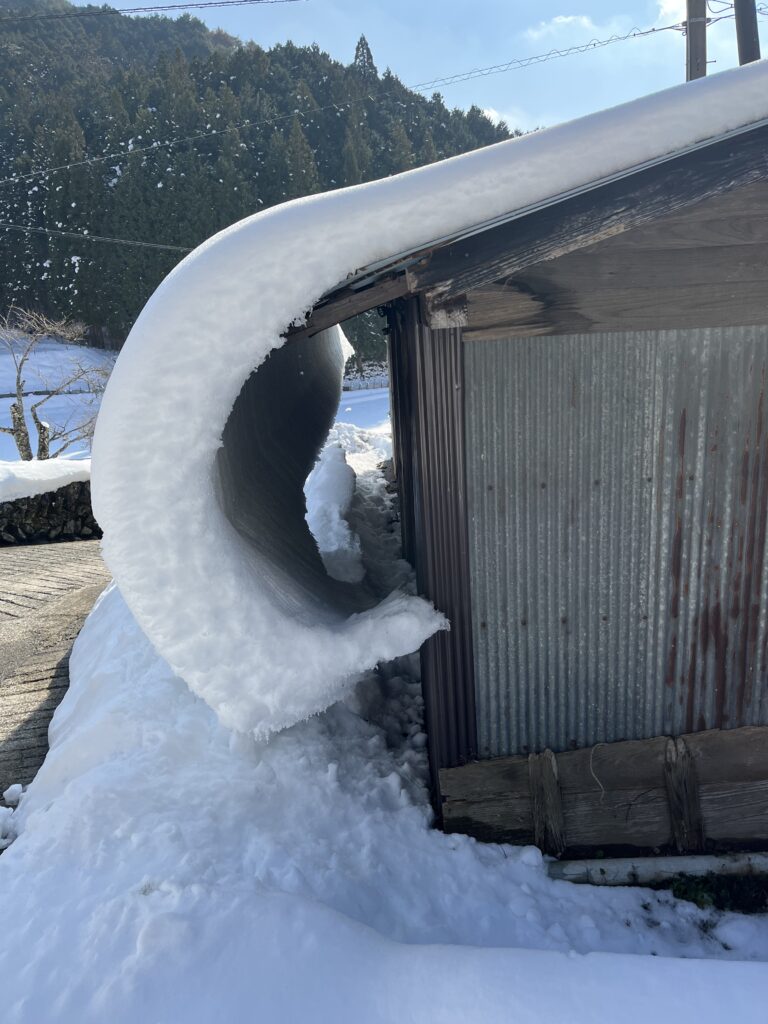
Just How Cold Does It Get?
The answer is: it depends. This winter, we have had snow as deep as 20 inches (50 cm) in our area, and in the past we have seen temperatures drop to -12 degrees Celsius or lower. It often snows from late December through February, with early to mid-February being the coldest part of the year. We may get light snow earlier in November, or later in March.
Areas of Japan such as Hokkaido experience much, much colder winters with heavy snow.
Every winter, one of my biggest fears is shimoyake – or “chilblains” in English. If you are not from a cold climate, you can read about chilblains here, but to put it simply, chilblains are caused by the cold and can blister and be very painful.
My first experience with shimoyake was in Japan, and in the winter I sometimes get them on my hands and feet. In the U.S. I grew up with carpeted floors and central heating, and was used to running around barefoot all year round.. so, I was completely unprepared for what Japanese winters had in store!
In addition to the physical effects of cold during Japanese winters, you might also spot frost on the inside of window panes, or see your breath in unoccupied rooms before you turn on the heat. My Japanese mother-in-law frequently leaves out leftovers on the kitchen counter in winter rather than put them in the refrigerator, because overnight the kitchen feels like an ice box!
Thankfully, there are a plethora of ways to keep warm in Japan.
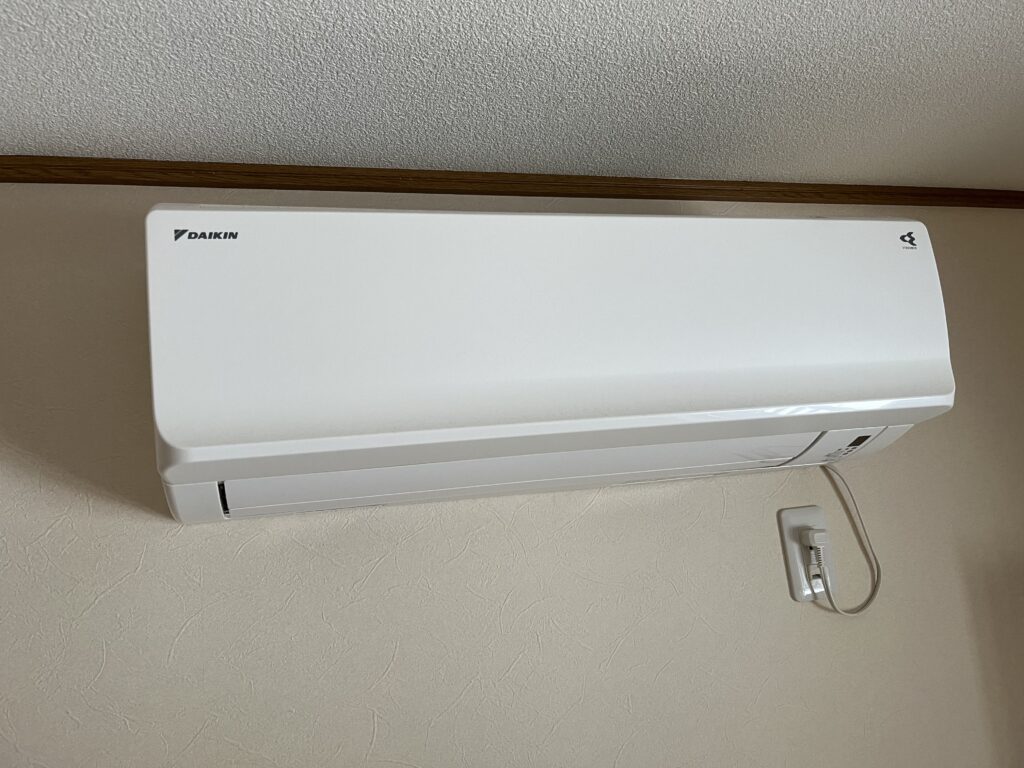
Heating Units
Although most homes in Japan do not offer central heating, some homes come equipped with A/C units in individual rooms for heating and cooling, usually installed on the wall near the ceiling.
However, this is more common in the cities, and many rural houses do not have these luxuries.
Since moving into our home in the countryside, we have had a few A/C units installed, but not all of the rooms in our house have this. We have found that usually, it is only necessary to use them in December-February, and parts of July and August.
In addition to heating units, probably the second-most common way to warm rooms is through using kerosene heaters in individual rooms. These operate using kerosene gas, and can smell bad. In addition, rooms that use kerosene heaters should theoretically be well-ventilated, but in practicality are often not.
Kerosene heaters can cause me breathing problems, and we no longer use any kerosene heaters in our home due to the risks (for more information on kerosene heater safety, see here).
Instead, we opt for electric heaters, another popular heating option in Japan which can be plugged into the wall, and is much safer for homes with small children. There are also many cute designs of electric heaters that look like fireplaces. You can buy cheap ones from secondhand stores!
In the morning, we put one electric heater under the tablecloth that covers the dining-room table, which holds the heat like a makeshift kotatsu (see below for more on kotatsu!).
Traditional Heating Tables
Besides the heating units that are common in Japan, there are more traditional ways to keep warm.
One of these is heated tables, or kotatsu (see here).
Heated tables have a lengthy history in Japan, and were once fueled by charcoal! Today, most heated tables are electric, and plug into the wall. The table is heated from the center frame underneath, and on top of the frame you can pile as many thick blankets as you desire, adding additional warmth. Finally, the frame and blankets are covered with a removable tabletop.
One of the benefits of kotatsu is that generally, they are much more affordable than running electric heaters or A/C units.
Some people even like to take naps or sleep in the kotatsu!
During the warmer months, we remove the blankets and cords from our kotatsu, and use the wooden frame as a coffee table.
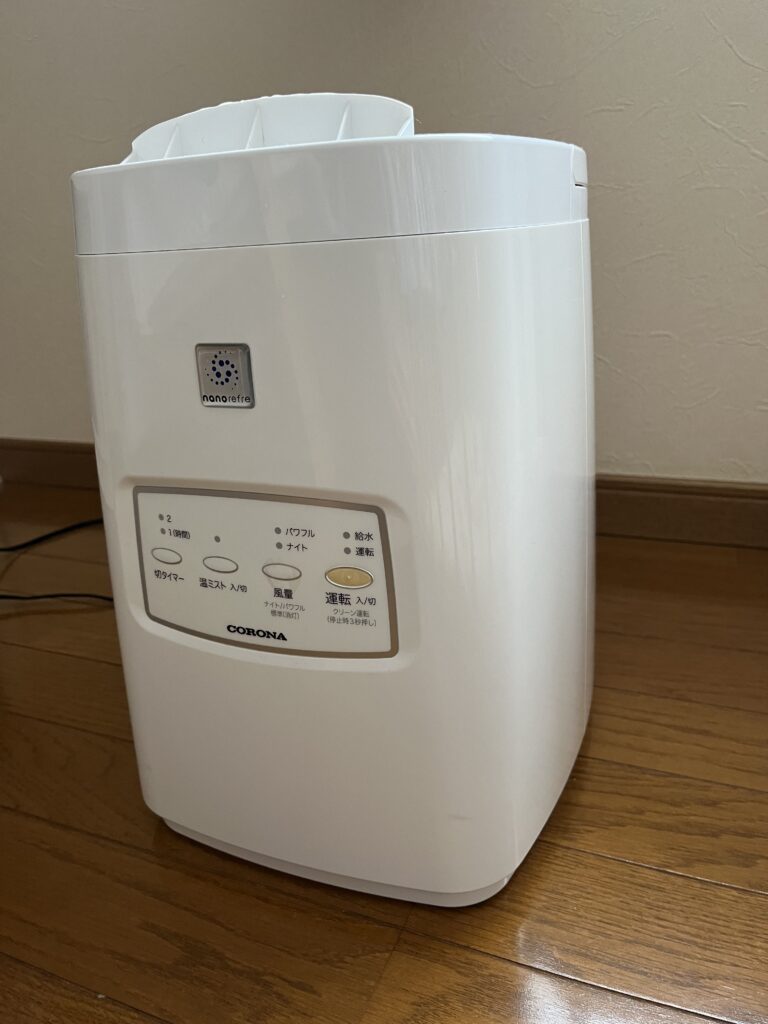
High-Tech Heating
While kotatsu may keep your lower limbs warm, a humidifier can be a cost-effective way of warming whole rooms.
By increasing the humidity indoors, the temperature increases too.. and an added benefit is more moisturized skin during dry, windy days.
Few families in Japan choose to run the electricity all night, which means that nights can be especially chilly. To combat this, there are many ways to keep warm besides using lots of blankets!
Some of our neighbors heat their futons with a kansouki (see here). We use a bed instead of a futon, and warm the ice-cold mattress and sheets with an electric blanket right before we hop in the bath. That way, by the time we are finished getting ready for the night, the bed is toasty warm! We then unplug the blanket before sleeping and store it for the next day.
Kairo, or heat packs, are another high-tech heating favorite. Kairo are fueled by chemical reactions, and include stick and non-stick types. You can toss a kairo in your pocket to keep your hands warm, or stick a kairo to the back of your shirt or anywhere you feel cold! To learn about the different types of kairo, see here.
When I used to teach at an after-school program for children in Japan, the rooms often featured electric heated carpets, which can also be useful in the home.
Lastly, Japan has another high-tech heating solution for a problem that many other countries overlook – cold toilet seats! Most toilets feature heating options, and you can adjust the seat to the perfect temperature.
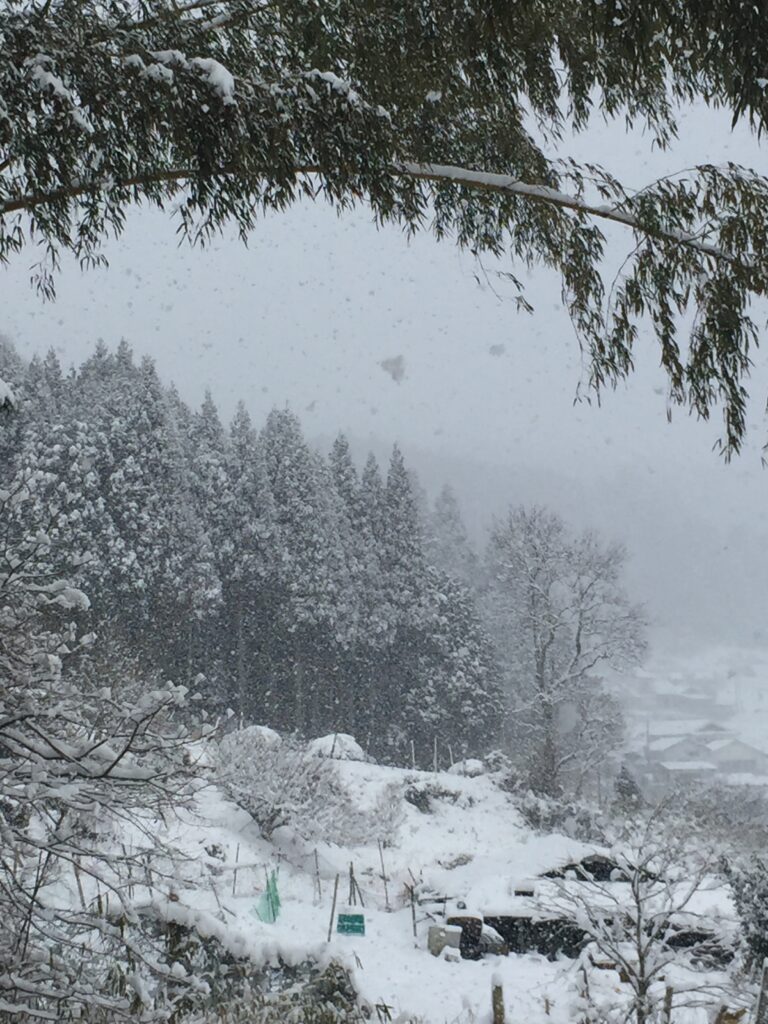
Low-Tech Heating
While technology might play an important role in keeping homes in Japan warm, there are plenty of low-tech heating options as well!
If you cannot afford a kansouki or an electric blanket, using an old-fashioned heated water bottle at the foot of the bed, called a yutanpo, is popular in Japan. Although I have never used a yutanpo for heating the bed, I loved it for pain relief during my postpartum recovery! See here for some examples.
Most Japanese take a bath before bed. Soaking in the tub helps keep body temperatures high, and is especially helpful for avoiding chilblains!
It is also common in rural homes to have seasonal mats and rugs for the colder months to cover cold wooden floors. These are then rolled up and stored during the warmer parts of the year.
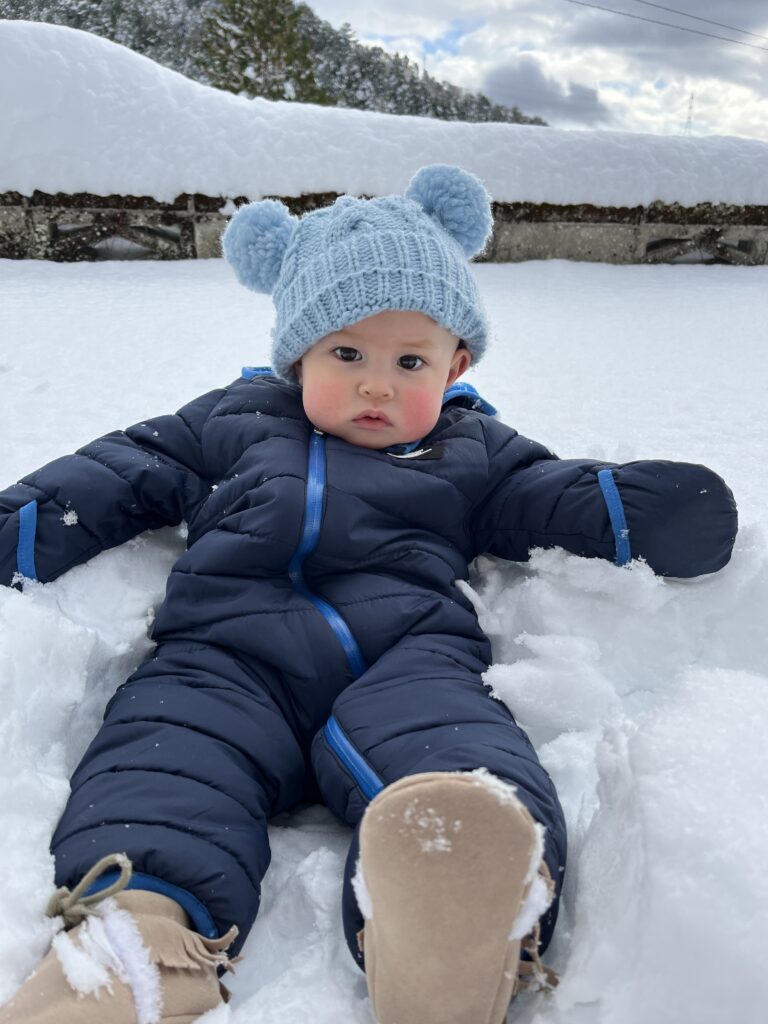
Winter Clothing
In Japan, people remove their shoes when entering a house, and often wear slippers indoors. Many people have separate fluffy, warm slippers for winter.
They may also wear insulated leggings, or thermal underwear. Others may opt for “heat tech“, or warm base layers made popular by Uniqlo. Despite the fancy name, heat tech does not feature any electronics, but is clothing that is specially designed to hold in heat. Personally, I prefer fabrics such as real wool for warmth.
Another type of clothing that is especially popular in the cold countryside climates is chanchanko or hanten (see here). Chanchanko are like padded vests that provide extra warmth. It’s almost like wearing a blanket, and in the winter, chanchanko is basically my husband’s indoor uniform!
Our son also wears a baby chanchanko over his pajamas at night to keep him extra cozy.
Other Ideas
Beyond the suggestions above, here are some other ideas for keeping warm!
Putting socks on door handles: although it might sound silly, putting socks on any metal door handles helps keep my fingers from getting chilblains.
Eating seasonal foods: there is a reason why nabe (see here) is so popular in Japan during the winter months! When possible, we opt for winter recipes that include food that is steamed, boiled, or baked.. a humid and warm room plus a hot meal is a bonus!
Drinking hot tea or coffee: hot mugs double as hand-warmers!
Shoveling snow: you might think that shoveling snow would make you colder, but it’s actually a great workout!
Using foot warmers: Japan sells electric foot warmers that plug into the wall, perfect for using on the floor beneath your desk!
Wearing fingerless gloves: on days when it’s too warm for full-on mittens but the wind is still strong, I often wear fingerless gloves. Before we installed an A/C unit in our office, I used these while typing as well!
Using microwaveable warming pillows: similar to yutanpo, there are microwaveable warming pillows available in Japan, that you can keep on your lap while doing office work.
Hanging thick curtains on windows: can help reduce heat loss. Some apartments in Japan do not come furnished with window-curtains, so you have to provide your own!
Setting a heater timer: some of our friends set their A/C unit to turn on in the morning, so that the room is warm before they get dressed.
Do you have any other ideas for how to stay warm during cold winters? Have you experienced a frigid Japanese winter?
If so, feel free to leave a comment below!
For more on Japanese winters, check out our post on Christmas and Shogatsu in Japan.
Photo credits: (c) theharunafamily.com

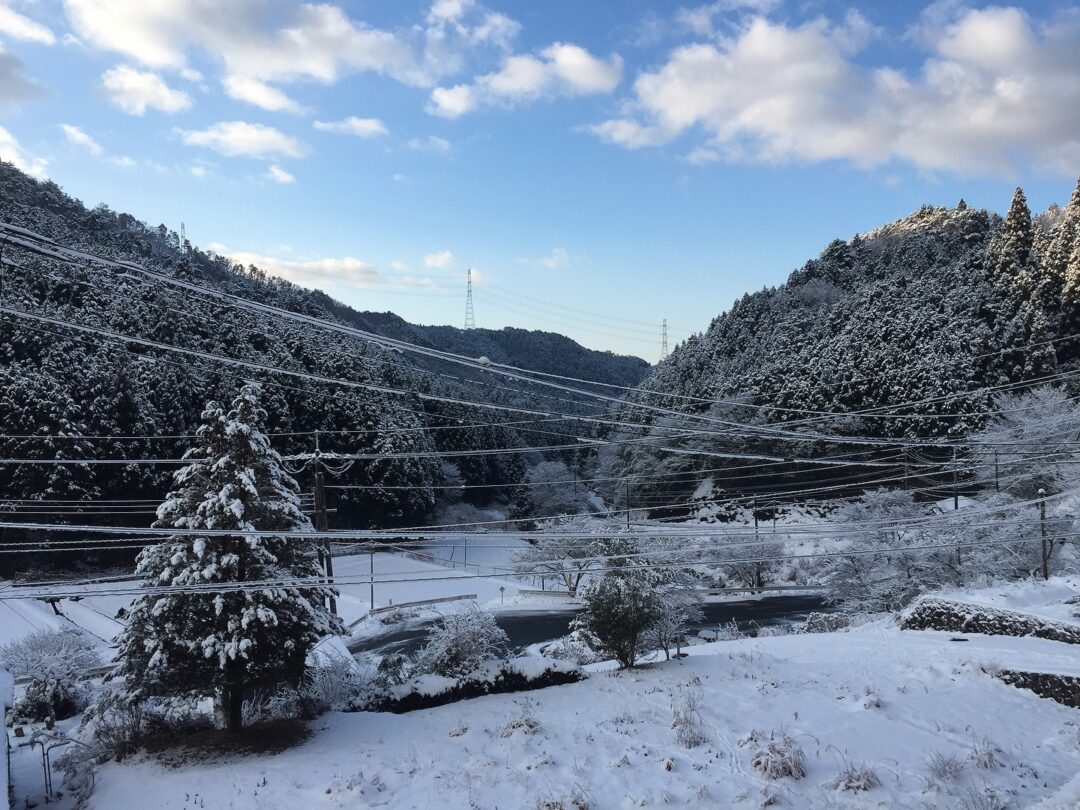


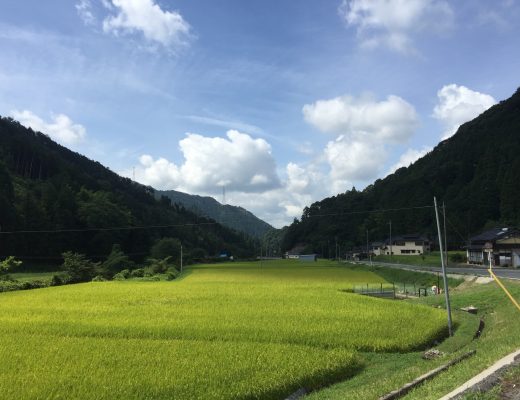

No Comments